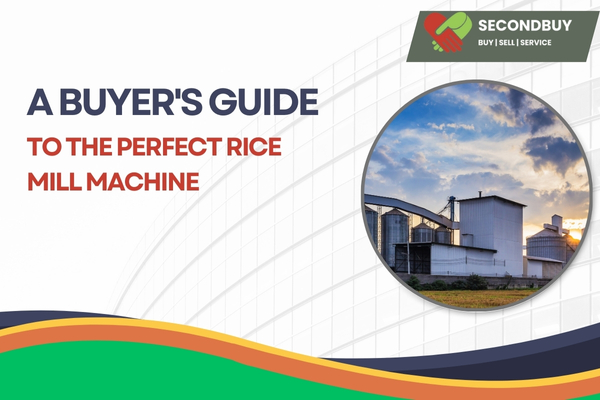Investing in Quality: A Buyer's Guide to the Perfect Rice Mill Machine
In the ever-evolving landscape of agriculture and food production, efficiency and quality are paramount. For rice farmers and processors, investing in the right equipment can make a significant difference in the overall output and profitability of their operations. One crucial piece of machinery that stands out is the buy rice mill machine . In this comprehensive buyer's guide, we'll explore the key factors to consider when looking to buy a rice mill machine and how to ensure you make an informed and worthwhile investment.
Understanding Your Requirements:
Before diving into the market, it's essential to assess your specific needs and requirements. Consider the scale of your rice production, the types of rice you'll be processing, and the level of automation you desire. Whether you are a small-scale farmer or a large-scale processor, understanding your operational demands will guide you in selecting the most suitable rice mill machine.
Key Features to Look For:
Capacity and Throughput:
Evaluate the machine's capacity to ensure it aligns with your production goals.
Consider the throughput – the amount of rice the machine can process in a given time. This is crucial for maintaining efficiency during peak production periods.
Milling Techniques:
Different to buy rice mill machines use various milling techniques, such as abrasive, friction, or cutting. Understand the pros and cons of each method and choose the one that best suits your requirements.
Quality of Output:
Assess the quality of rice produced by the machine. Look for features that ensure a consistent and high-quality output, such as sorting and polishing mechanisms.
Ease of Maintenance:
Choose equipment that is easy to clean and maintain. Longevity and peak performance require routine maintenance.
Automation Level:
Determine the level of automation that fits your operation. Fully automated machines may come with a higher upfront cost, but they can significantly improve efficiency and reduce labor costs over time.
Energy Efficiency:
Consider the energy consumption of the machine. Opting for an energy-efficient model not only reduces operational costs but also aligns with sustainable practices.
Researching and Comparing Brands:
Once you have a clear understanding of your requirements and the key features to look for, it's time to research and compare different brands in the market. Look for reputable manufacturers with a history of producing reliable and durable rice mill machines. Reading customer reviews and testimonials can provide valuable insights into the real-world performance of the machines you're considering.
Consider reaching out to industry experts, fellow farmers, or processors for recommendations. Attend trade shows or exhibitions where you can see the machines in action and gather firsthand information from manufacturers.
Budget Considerations:
While investing in quality is crucial, it's equally important to stay within your budget. Create a realistic budget based on your financial capacity and the expected return on investment. Compare prices from different manufacturers and weigh the features offered against the cost.
Additionally, inquire about warranty options and after-sales support. A reputable manufacturer will stand by their product and provide assistance in case of any issues.
Moreover, when exploring different brands and models, pay attention to the customer service and technical support offered by manufacturers. A responsive and reliable support system can be invaluable in addressing any unforeseen issues and ensuring minimal downtime during critical production periods.
Consider the adaptability to buy rice mill machines for various rice varieties. Different rice types may require specific milling processes, and a versatile machine that accommodates various grains can enhance your overall operational flexibility.
In addition, inquire about the availability of spare parts and the ease of obtaining them. A well-stocked inventory of spare parts ensures that you can quickly replace any worn or damaged components, minimizing disruptions to your production schedule.
It's also worth looking into the technology incorporated into the machine. Modern advancements such as digital controls, data monitoring systems, and smart technologies can contribute to more precise milling, reducing waste and optimizing resource utilization.
When making your final decision, take into account the long-term cost of ownership. A slightly higher initial investment in a machine with advanced features and superior durability may prove more cost-effective over the machine's lifecycle, considering reduced maintenance and higher productivity.
Lastly, don't hesitate to seek feedback from industry peers who have firsthand experience with the rice mill machines you are considering. Their insights can provide valuable perspectives and highlight aspects that might not be apparent from technical specifications alone.
Conclusion
Investing in the perfect rice mill machine requires careful consideration of your specific needs, thorough research, and a realistic budget. By focusing on key features such as capacity, milling techniques, output quality, ease of maintenance, automation level, and energy efficiency, you can make an informed decision that will positively impact your rice production operation. Remember, the right investment today can lead to increased efficiency, improved quality, and long-term profitability tomorrow. So, when you set out to buy a rice mill machine, invest wisely for a bountiful future.

